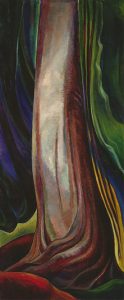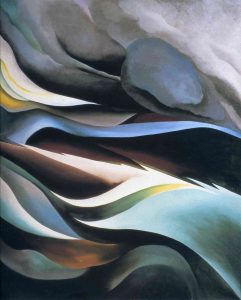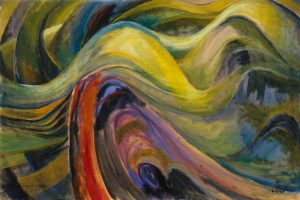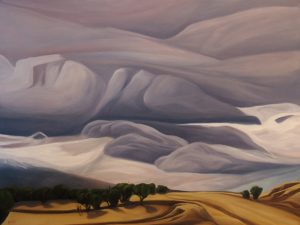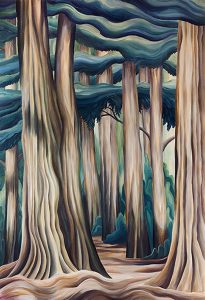In response to Martha Pfanschmidt’s blog/Georgia:
I am also a fan of Georgia O’Keefe and strive for an economy of shape in my own work. I believe that to appreciate a shape is to reduce its form, not to oversimplify but to seek its essence. But with Georgia and another painter of her day, Emily Carr, there is more than a love of form and shape that they share.
They both study nature, but something most compelling in their work is the sense of volume, a sensual energy that inhabits the shapes.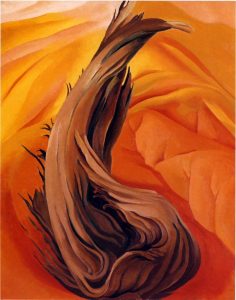
Georgia’s palette is clean and filled with New Mexican sunlight where Emily’s colors are muted, painted with mists of the BC rain forests. When I moved from Colorado, my sun-filled palette of primary color was immediately influenced by the saturated cloudy hues of the Pacific Northwest. It took awhile for me to embrace subtle tones that seemed almost void of color. I took a watercolor class in Seattle where we painted color value squares from one to ten. The most intriguing were the first two in the series with almost zero pigment. How to make a color with as little pigment as possible? It was a good study.
Georgia and Emily were both pioneers of their day, and moved toward the abstract as they matured as painters.
Here are two contemporary painters that I admire that work in a similar style, lovers of nature and masters of energetic volume – also an American and a Canadian.
Martha Pfanschmidt says, “I aspire over the next years to work towards that economy of form and shape, and to convey through my art, as Georgia did, how to fill a space in a beautiful way.” I will also strive for this in hopes of achieving my own energetic sense of volume. May we all heed the words of Emily Carr, “be careful that you do not write or paint anything that is not your own, that you don’t know in your own soul.”

